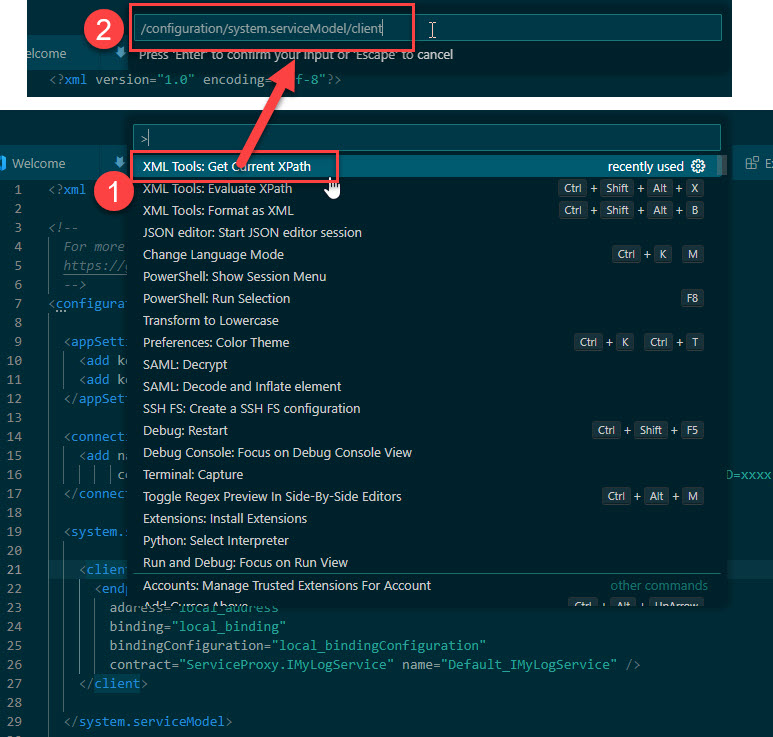powershell editing XML config files with powershell
A long, long time ago in a server room far, far away I needed to automate deployment of web services in IIS server and parametrize the web services via script.
This lead me to creation of Edit-Config.ps1 which I published also in Technet Gallery (which was retired 12/2020).
Recently, I needed to use that script again, so I decided to publish it in PowerShell gallery. In this post, I will provide:
- Steps to install the module/script.
- Common scenarios where the script can be useful.
- Notes on changes made since the original version prepared in 2015.
![]() BEWARE
BEWARE![]() Please be cautious when using this script and thoroughly test it before implementation.
Please be cautious when using this script and thoroughly test it before implementation.
Nevertheless, I hope it proves helpful to someone ![]() .
.
Set-Config module installation
Simply:
Install-Module Set-Config
Usage
To edit an XML config file, follow these steps:
- Backup the Original File: Before making any changes, create a backup of the original XML config file to ensure you can revert back if needed.
- Determine the XPath: Identify the XPath expression that targets the specific attribute, value, or element text you want to modify within the XML file.
-
Run Set-Config: Utilize the
Set-Config(formerlyEdit-Config) script to programmatically update the XML config file based on the specified XPath and desired changes. - Verify the Contents: After running the script, verify the updated contents of the XML file. You can use tools like WinMerge or VSCode.
For XPath determination, consider using XML-specific tools available for text editors like Visual Studio Code with XML Tools plugin, or Notepad++ with XML Tools.

Determining XPath is 99% of the magic you need to know. Here are some resources for a better start.
It also covers 50% of your problems with editing the XML config. The remaining
50% is that you did not backup the original XML config. So don’t forget that
![]() .
.
Set-Config cmd-let requires these parameters:
| ParameterName | Description |
|---|---|
ConfigFileName |
This is the path to the Xml config you want to edit (and you have backed up for sure in the first place). |
XPath |
XPath determining the node you want to edit. |
When you know the file and the XML path you also want to usually set something
![]() .
.
For this purpose, you can use one or more following parameter(s):
| ParameterName | Description |
|---|---|
Attribute |
Name of attribute you want to set in an element/node. |
Value |
Value of attribute you want to set. |
InnerText |
Inner text to set in an element/node. |
To preview changes, you can run the Set-Config with -WhatIf
parameter.
Enough, let’s see some examples!
Example 1: Setting a certificate thumbprint in Web.config
One of common scenarios is modifying web service certificate thumbprint
parameter in the Web.config configuration file. This is typically found in
serviceCertificate
element in attribute findValue.
To preview the changes first, run following PowerShell command.
Set-Config -WhatIf -ConfigFileName web.config -XPath "/configuration/system.serviceModel/behaviors/serviceBehaviors/behavior/serviceCredentials/serviceCertificate" -Attribute "findValue" -Value "E483FA9FFA42F000A366773DD124CE532C31BC68"
The cmdlet will attempt to replace the value in the configuration. In the screenshot, you can see a warning indicating that a missing element in the web.config file is causing this issue.
You can safely ignore the warning if you want to create a new XML element in the config file.

To actually make a change run the same code but without WhatIf directive.
Set-Config -ConfigFileName web.config -XPath "/configuration/system.serviceModel/behaviors/serviceBehaviors/behavior/serviceCredentials/serviceCertificate" -Attribute "findValue" -Value "E483FA9FFA42F000A366773DD124CE532C31BC68"
The cmdlet can be a little more chatty. To obtain additional information, use the -Verbose parameter.
Example 2: Updating / setting metadata URL in application configuration section
In some cases, you may encounter identical elements that differ only in the attribute values section. This scenario is typical for key-value application configuration sections.
Consider following application configuration section:
<appSettings>
<add key="LogFile" value="C:\TEMP\application.log" />
<add key="EventLogLevel" value="3" />
<add key="FileLogLevel" value="3" />
</appSettings>
To change the FileLogLevel you can use this XPath:
/configuration/appSettings/add[@key="FileLogLevel"]
The entire cmdlet would than look like this:
Set-Config -ConfigFileName web.config -XPath '/configuration/appSettings/add[@key="FileLogLevel"]' -Attribute "value" -Value "4"
Example 3: Silent usage
When you want to modify the config file silently, you need to specify -Confirm:$false parameter. E.g.
Set-Config -Confirm:$false -ConfigFileName web.config -XPath '/configuration/appSettings/add[@key="FileLogLevel"]' -Attribute "value" -Value "4"
Few notes on changes
Set-Config differs from Edit-Config only in name.
I’ve changed the name to better reflect what the cmd-let does and decided to use one of the approved verbs for PowerShell commands.
I’ve included alias Edit-Config for backwards compatibility.
Note to self: naming things is hard.